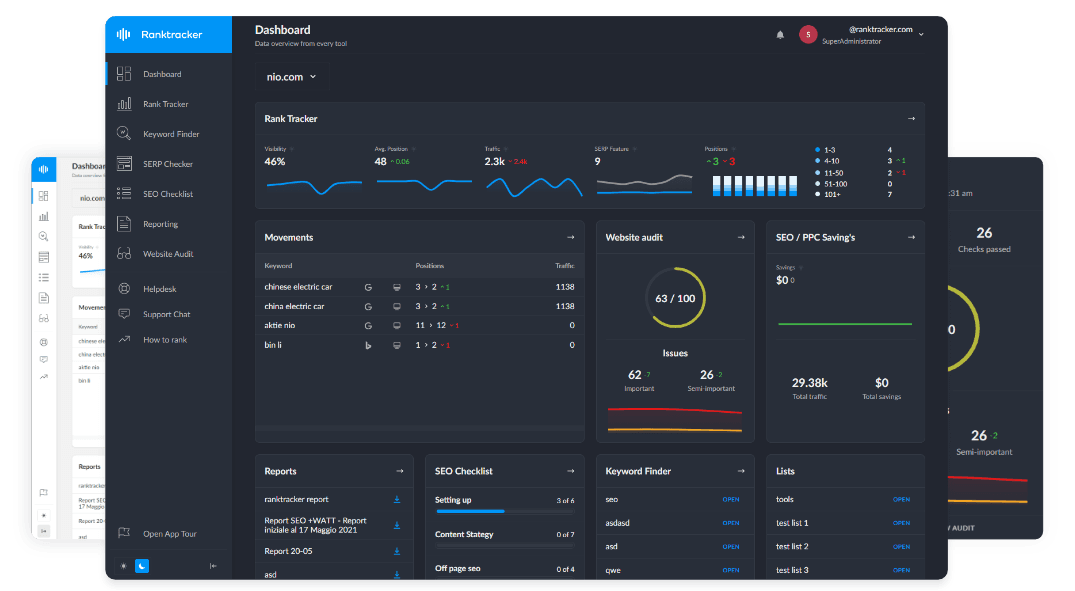Intro
For local businesses, showing up in the Google Maps results (local pack) can drive more traffic, calls, and visits than traditional organic rankings. But map rankings aren’t the same as standard search results—they’re dynamic, location-specific, and influenced by entirely different factors. That’s why you need a Google Maps rank tracker to measure your real local visibility.
Whether you're managing SEO for a local service provider, a multi-location franchise, or a regional brand, tracking how your business ranks in Google Maps across different cities and ZIP codes is essential to understanding your local SEO impact.
What Is a Google Maps Rank Tracker?
A Google Maps rank tracker monitors how your Google Business Profile (formerly Google My Business) ranks in the map pack and Maps tab for specific keywords and locations. Unlike regular organic tracking tools, it captures your placement in:
-
The 3-pack local listings shown in standard Google results
-
Full Google Maps listings across mobile and desktop
-
Results influenced by proximity, reviews, and business details
-
Searches with local intent—like “plumber near me” or “best coffee in [city]”
This is key for measuring visibility, lead potential, and foot traffic opportunities in local search.
Why Map Rankings Matter
-
Map pack clicks convert: Users searching in Google Maps or the local pack are often ready to call, visit, or book.
-
Local SEO is separate from website SEO: You can dominate map results even if your site ranks lower—and vice versa.
-
Visibility changes block by block: Your ranking in Google Maps can differ dramatically within the same city, depending on ZIP code, device, and user proximity.
-
Proximity bias impacts performance: Businesses closer to the searcher often rank higher—but optimization still matters.
If you’re not tracking these rankings, you’re missing critical data about how and where customers find your business.
What to Look for in a Google Maps Rank Tracker
To be useful, the tool should provide:
-
Tracking of rankings in the map pack and Google Maps tab
-
Keyword-specific tracking per location or ZIP code
-
Mobile and desktop tracking for local SERPs
-
Visual display of rank positions on a local map (geo-grid tracking)
-
Ability to track multiple business locations or clients
-
Historical ranking data for local results
-
Integration with Google Business Profile performance metrics (where possible)
How Ranktracker Handles Google Maps Ranking
Ranktracker’s platform includes full support for local and map-based keyword tracking, making it possible to monitor how your business appears in local search—down to specific cities or neighborhoods.
With Ranktracker, you can:
-
Track local pack positions for key business keywords
-
Monitor keyword visibility by city, ZIP code, or geo-location
-
See rankings from both Google Maps and standard SERPs
-
View mobile and desktop map results separately
-
Compare performance across multiple business locations
-
Detect when your listing drops out of the top 3
-
Generate city- or store-specific SEO reports for internal teams or clients
It’s a powerful way to measure local SEO progress, especially if you’re actively working on reviews, listings, citations, or local content optimization.
Who Needs a Google Maps Rank Tracker?
-
Local businesses competing for map pack visibility
-
Multi-location brands managing local SEO city by city
-
SEO agencies offering local ranking audits or ongoing GMB optimization
-
Service area businesses where location determines lead volume
-
Franchise owners benchmarking performance across stores
-
Hospitality, medical, and legal businesses targeting location-intent searches
If your business depends on people finding you locally, you can’t rely on traditional keyword rankings alone. A Google Maps rank tracker shows you whether you’re visible where it actually counts—in the map listings where customers search, decide, and convert.

